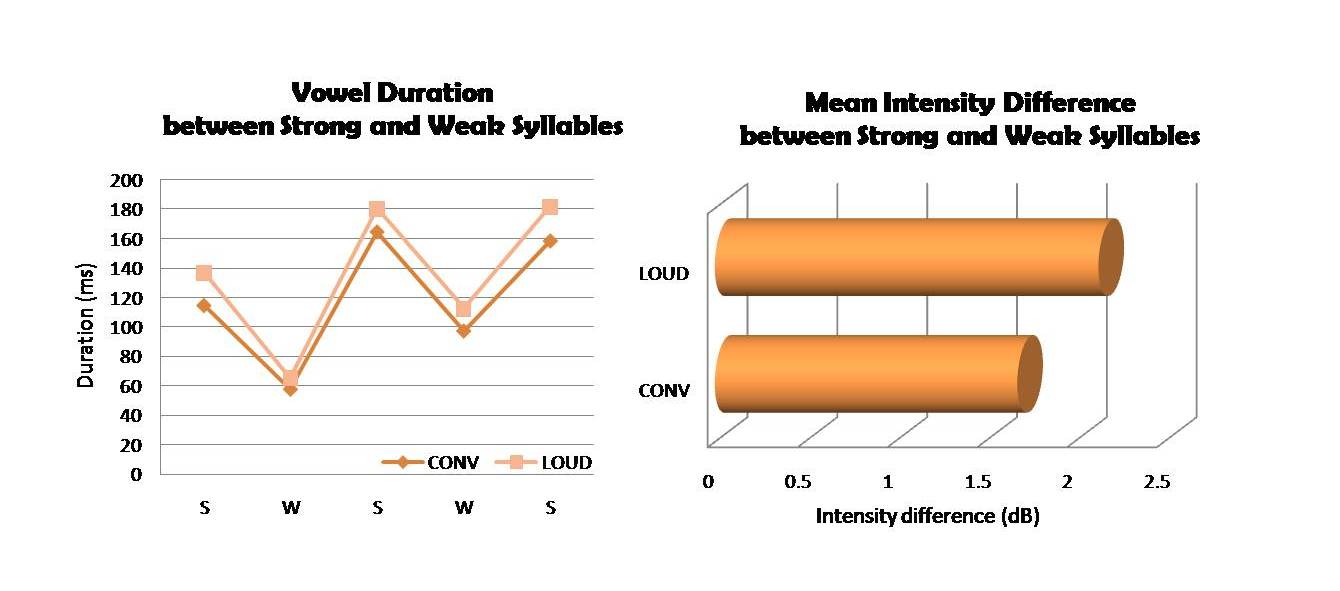
Yunjung Kim- ykim6@lsu.edu
Department of Communication Sciences and Disorders
Louisiana State University
Baton Rouge, LA 70803, USA
Popular version of paper 4aSCb8
Presented Thursday morning, Nov 3, 2011
162nd ASA Meeting, San Diego, CA
In clinical settings, people with speech disorders secondary to neurologic conditions—for example, stroke, Parkinson’s disease—are frequently trained to speak louder so that they sound more understandable to listeners. However, it is not yet clear why this strategy might yield better speech intelligibility. Do speakers overarticulate in pronouncing vowels or produce dramatic pitch variations across stressed and unstressed sounds, or are louder speakers more intelligible simply because of the increased volume of speech? Maybe a combination of increased loudness and overarticulation contributes to the increased understandability of high-volume speech.
As suggested by one of her recent studies, in which a simple volume-up of speech sounds by controlling the level of amplification did not seem to result in a change in speech intelligibility for individuals with and without speech problems, Professor Yunjung Kim, Department of Communication Sciences and Disorders, Louisiana State University turned her interest to the perspective of speakers, and then, examined what kind of changes were made to speech acoustic signals when people spoke louder, with an emphasis on the relative contrastivity within and across utterances. For example, the words ‘BOOT’ and ‘BOOK’ are distinguished by certain frequencies within the vowels; are these frequencies more distinctive in loud speech as compared to speech produced at a “typical” volume? In addition, are sounds more dramatically different in pitch, loudness, and length between strong and weak syllables when they are produced with loud voice?
Participants were asked to read the same sentences using usual and loud voice. The sentences were composed of 2 sets: 1) Set 1 was designed so stress alternated between strong and weak syllables, (e.g. Tim approved results of, SWSWSW), and 2) Set 2 was designed to include pairs of words with very similar vowels that are contrasted by their frequency content (e.g. He placed his BOOT and BOOK on the same shelves).
BOOT vs BOOK (Click to listen to an example utterance produced by a 22 year-old-female) sound file 1 inserted here linked to here
When people were asked to speak LOUD, two kinds of changes in addition to an increase in loudness were found compared to usual speech: 1) fundamental frequency (perceptually termed as pitch) increased, and 2) vowels were lengthened.

Figure 1. An utterance “She met her mate in Australia”, loudly-produced by a 21-year-old woman. Average and variation of pitch and loudness became greater when compared to the same sentence produced in her usual voice.
However, although many aspects of speech sounds including intensity, pitch, and vowel duration changed by becoming either longer or higher when spoken loudly, interestingly, acoustic CONTRASTIVITY between strong and weak syllables, and tense and lax vowels, did not seem to increase in loud speech except for INTENSITY across strong-weak syllable chains. For instance, vowel durations in “Tim approved results of” alternated between long and short in both usual and loud speech (shown in Figure 2, left), but the durational difference between long and short vowels was not exaggerated in loud speech. However, interestingly, intensity differences across strong and weak syllables appeared significantly increased when spoken loudly (shown in Figure 2, right).

Furthermore, the frequencies of similar vowels (e.g. BOOT vs BOOK, BID vs BEAD, MET vs MATE) did not show increased distinction in loud speech, which is somewhat inconsistent with prior research, which has reported exaggerated articulation mostly in single vowel, syllable, or word productions.
These results tell us two important things about understanding the acoustic changes that occur in loud speech: First, exaggeration of the sequences of vowel intensities between strong and weak syllables may be the primary adjustment when people speak loudly. Second, in connected speech, compared to isolated segment (vowels, for example), syllable or word production, increased vowel clarity may be not as prominent as in isolated contexts when speaking up loudly. In other words, the kind of speech material (e.g., single words versus sentences) from which these kinds of data are taken may have an important influence on the findings). These findings suggest further investigations whether the effect of loud speech would be same between speakers with and without speech disorders.